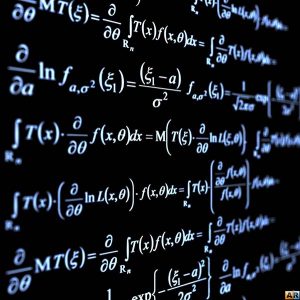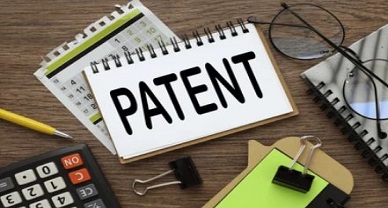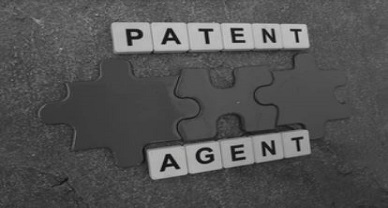
The mathematical equations are not copyrightable per se because granting the copyright will create a monopoly and every person would not be able to use the equations (established fact). It is very similar to the saying that the law has been made but no person can use it. As, no one has copyright over the law/rule, the very same way mathematical equation also cannot be copyrighted. The mathematical equations are the law of nature and hence every person has the opportunity to use it. Therefore, copyright is not granted to the mathematical equations.
The aim of the Indian Copyright Law is to promote the progress of the useful arts and science by protecting the exclusive right of authors and inventors to benefit from their works of authorship. Copyright law protects literary, musical, graphical, or other artistic forms of the works in which the author expresses the intellectual concepts. While there are some exceptions to this rule, one of them is mathematical equations that cannot be copyrighted. In the normal parlance, if the excerpt is the original work of the author it is a subject-matter of the copyright. But this is not the case with mathematical equations as they are the matter of fact and laws of nature so each and every person is authorized to use it without the fear of copyright infringement.
The discovery of such equations cannot create a monopoly over the person who describes it, as it will restrict the free-flow of information and can be used by only the proprietor owner of that work or the licensee of the owner. No other person can use it.
In the case, Chancellor Masters and Scholars of The University of Oxford v. Narendra Publishing house &Ors, Justice Bhat held that “mathematical questions are an expression of laws of nature. The discovery of such laws cannot confer a monopoly to those who describe it. The reason is that language is a limited medium, which enables a description of such laws of nature – in only a few ways.”
For Example – A mathematical equation A2 +B2 = C2. There is no copyright protection for this equation. These all are well-established laws of nature. This is the point where the doctrine of the merger comes into play which is discussed in detail in the next section.
While, if the book with the same set of equations comprising of many examples and questions in it, then the author of that book has the right of copyright in its original work.
For Example – Mrs. Shakultala Devi, Dr. R.D. Sharma does have the copyright in their respective mathematics book. Both books will have the general concept of mathematics but in totality, the book has different examples, sets of arrangements, questions, etc., so they have different copyright in their own books.
In a legal sense also, you can copyright the content of a math book (such as diagrams, word problems, and illustrations) but the formula, problems, proofs, theorems themselves cannot be copyrighted. You cannot copyright a fact which is established and natural i.e., 1+1=2. This means that if you express your math formula in a book copyright protection will extend to the book as it the original work of authorship. Copyright subsists will be limited to the copying of the mathematical publication but not on the mathematical formulas contained in the publication.
DOCTRINE OF MERGER
A foundational element of copyright law is that it does not grant the author of literary work protection on ideas and facts. It is the creative expression of such ideas and facts that are rewarded by law, by conferring a privilege to exclusively exploit such expression for a limited time. Law does not protect every such expression. The law affords protection to expressions that are fixed in a medium and are “original”.
In India, Section 13 of the Copyright Act states that only “original” literary, artistic, dramatic, and musical works are the subject matter of copyright. A literary work, in order to qualify as work in which copyright can subsist, must therefore be original. The important thing to note is that the work must be fixed in some tangible form of expression; you cannot copyright an idea or concept based on the way it is expressed.
In order to balance the interests of society in the free flow of information against the property interests of authors gave rise to the idea of protecting expression but not ideas. Courts have restricted themselves to put forth a straitjacket definition for the term idea. An idea has been described as a thought, as a virtual image, as a conception of theory. In layman terms, an idea can thus be described as a formulation of thought on a particular subject while expression would constitute implementing the said thought. Needless to state, the issue of copyright arises when the same idea can have numerous expressions. If the same idea can be expressed in a number of different ways, a number of different copyrights may coexist and no infringement will result. However, a problem arises when it becomes difficult to trace the difference between the idea and its expression. Herein lays the idea of merger where an idea and the expression cannot be delineated and they are said to have merged. In the case of a merger, the expression may not be copyrighted, because to do so would in effect be copyrighting the idea and the idea is not copyrightable.
However, an often-quoted policy concern of this doctrine is that to avoid the monopoly of the idea upon copyright owner, when the expressions are inseparable from the ideas, those expressions are not protected. At the same time, an idea also has certain expressions, without which the idea cannot exist. In other words, there can exist an idea was changing the expression of the same in a particular form would, in effect change the very idea itself. Mostly, courts are in the opinion that these essential ideas not copyrightable, as to copyright them would also, in effect, copyright the idea. This type of merger is called scenes a fair.
Another example of a merger is when there are very few ways to express a given idea. This is called ‘Idea-expression identity’ exception when specific instructions, even though previously copyrighted, are the only and essential means of accomplishing a given task, their later use by another will not amount to an infringement. The idea/expression dichotomy has been miserably fallen for its failure to provide practical guidelines instead of the fact that the idea/expression dichotomy is such a time-honored doctrine. The complexity lies in the fact that very few if any, works contain exclusively either ideas or expressions. Indeed, almost any and every work can be abstracted into a spectrum of various levels of generality, at one extreme of which is the principal goal or theme of the work and the other extreme is the literary expression.
Courts recognize degrees of the merger.” An expression is considered indispensable or necessary to an idea. In certain circumstances, protection of the expression not the idea would confer a monopoly on the idea which is contrary to the intent of copyright law. In the case of Freedman v. Grolier Enterprises, the court implied that “In the case of copyright protection is not given “to a form of expression necessarily dictated by the underlying subject matter.” An inseparable expression that is copied is permitted. In other circumstances, courts stated that ideas and expressions are not inseparable, but a limited change in the form of the expression of an idea is possible; here, infringement occurs only with the whole appropriation of writing.
Thus, under this doctrine, the scope of protection for the writings depends upon the possibility of the existence of a variety of expressions. The merger doctrine is open to criticism. It merely represents an epicycle generated by the faulty metaphysics of the idea/expression dichotomy: an “expression” would never be taken as adding anything to an “idea” unless an idea is treated as an abstract entity behind the expression. Merger presupposes that normally there is room for substantial variation in the expression of ideas; only when there is little choice in the expression does the expression collapse into the idea. It is also true of expressions in all contexts since the form and content of writing shape each other. Writings at best differ from one another only in degree.
The above rule of doctrine of merger accurately fits in the case of mathematical equations. They are not copyrightable as it is difficult to separate its idea and expression from each other so granting the copyright will indirectly mean copyrighting the idea as well, which is not permissible under copyright law.
CONCLUSION
From the above discussion, it is clear that the mathematical equation per se is not copyrightable the reason behind it is the Doctrine of Merger. If mathematical equations are reduced in compiled form, having the original idea to it then it is protectable under copyright law.
In the case of Eastern Book Company &Orsv. D.B. Modak&Anr the court held that if the compiled form of any written excerpt fulfills the two conditions/doctrines i.e.,
- The sweat of Brow; and
- The modicum of Creativity.
Then that work will be considered to be ‘original’ and will be protectable under the copyright.
Author: Pratibha Ahirwar, Intern at IP and Legal Filings, and can be reached at support@ipandlegalfilings.com.


